|
Oral “Growing and learning together:
THE GERMINATION MAP OF JAPAN.“
Poster “Kenaf for Japanese Children:
Activities and Learner Outcomes”
( Those 2 presentations are mixed into one.)
Tsutomu Iyanagi, The Earth Club 1-1-23 Uwahara Shimizu-city
Shizuoka 424-0871 Japan,
e-mail: diyanagi@mail.chabashira.co.jp
And the Project Committee for The Germination Map of Japan, Hayashi
Nakayama (Prof. of Miyazaki University) e-mail: e04502u@cc.miyazaki-u.ac.jp
Oral
Since April 2001 Japanese children and teachers are growing Kenaf
in 202 schools. The largest number of participating schools, 162, are
elementary level and serve 6 to 12 year olds. This project is called
“GERMINATION MAP OF JAPAN". It has a history for 7 years and we grew
Kenaf for 5 years in this project. We want to report to you what this
collaborative learning between schools is all about. Why does it grow
so big in Japan?
Poster
In this project a lot of children are growing Kenaf in their schools.
Here are some of their activities. Sowing seeds together, growing differences
under different climates, information exchange about Kenaf growing on
mailing list and WEB board meeting system, flowering and flowering map,
expected time flowering, Kenaf leaves cooking, harvest and paper making,
making and exchanging post cards, picture book editing, fancy article
making, Kenaf growing with foreign schools through Internet, etc. Why
do we learn about Kenaf so widely?
Key Words: Kenaf, collaborative learning, The Germination Map of Japan
1. Introduction
In my presentation I am going to talk about 5 areas.
| Oral |
[1] Introduction
[2] How the project was started
[3] What collaborative learning between schools is
[4] Why this project grew so quickly and became so big
[5] What future subjects will be included |
| Poster |
Poster is inserted above chapters |
I am delighted to have this chance to meet you and
share information about growing Kenaf as a collaborative learning project
between for school in Japan. As this picture shows, The Germination
Map of Japan is a project that involves plant growing by Japanese children.
Kenaf is the main plant grown.
|
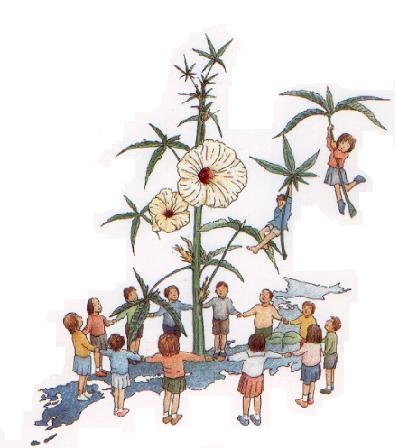
Fig.1 The Germination Map of Japan |
| I was a teacher in a junior high school until my retirement
3 years ago. Now I work as a volunteer in my community with a Saturday
kids club. Although we work at a local kids club, we are part of this
project which involves Japanese schools. |
|
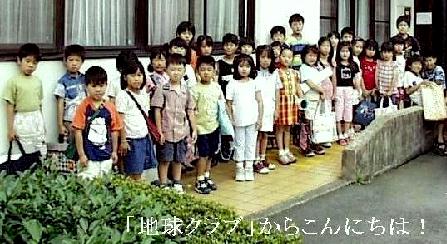
Fig.2 Hello from The Earth Club!
|
| The children made a germination box, which uses a small
lamp. With this we can grow Kenaf in winter. |
|
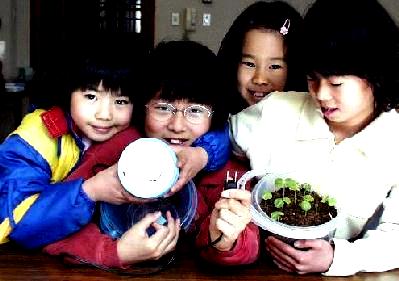
Fig.3 We want to be great scholars like you.
|
| In early spring we had our first Kenaf flower. Now
we are learning how to control the Kenaf flowers’ bloom time. We are also
learning how to predict when their flowers will open. As you can see Kenaf
gives us a number of excellent ways to learn about science. |
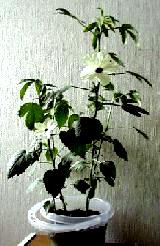
Fig.4 Mini Kenaf |
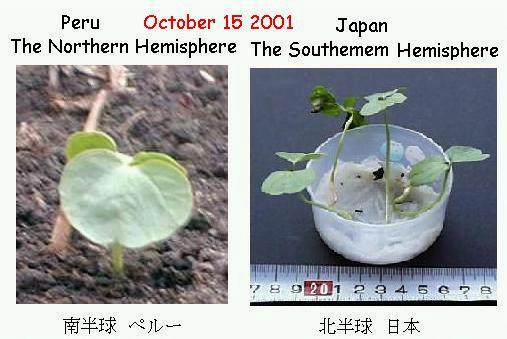
Fig. 5 We are working with friends in Peru and Belgium. |
|
| These are the numbers of schools participating in
this project.This April the number of Japanese schools growing Kenaf reached
202. In just 6 short years the schools growing Kenaf increased in number
from 11 to 202. |
Table 1 These are the numbers of participating schools
in this project:
| Year |
1995 |
1996 |
1997 |
1998 |
1999 |
2000 |
2001 |
| Schools |
11 |
24 |
50 |
77 |
53 |
162 |
202 |
|
Table 2 2000: number of participating schools in
“ The Germination Map of Japan “
| Kindergarten |
Elementary school |
Junior high school |
High school |
Junior & high mixed school |
Nursing school |
University study |
| 1 |
162 |
26 |
6 |
4 |
1 |
2 |
|
|
As you see the largest number of participating schools, 162, are elementary
level and serve 6 to 12 year olds.
2. The project’s beginning
8 years ago the Japanese government decided to introduce the Internet
into our schools. It began asking for proposals that required the use
of the Internet. About 1,000 schools competed to be part of the project.
100 schools were selected and were given Internet machines and lines.
That was the first attempt to incorporate the Internet into Japanese
school education. In looking over the ideas for using the Internet I
found a project called THE GERMINATION MAP OF JAPAN. I was very interested
in this project and arranged for us to join.
|
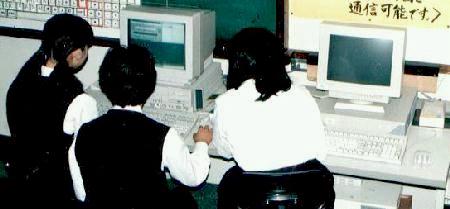
Fig. 6 The 100 Shools Net Working |
|
3. What is collaborative learning between schools?
Our group has participated in THE GERMINATION MAP OF JAPAN project
for 7 years. During those 7 years we grew the following plants.
|
Table 3 Growing plants in this project
| |
1995 |
1996 |
1997 |
1998 |
1999 |
2000 |
2001 |
| Primary plant |
Pumpkin |
Cotton |
Kenaf |
Kenaf |
Kenaf |
Kenaf |
Kenaf |
| Secondary plants |
|
|
|
|
|
|
Peanuts and cotton |
|
|
You will note that Kenaf was grown during 5 of the project’s 7 years.
Our project idea was to sowed the same plant seeds at the same time
in different areas.
Poster SOWING EEDS TOGETHER
We found that by using the Internet we could sow seeds and grow Kenaf
with friends throughout Japan
|
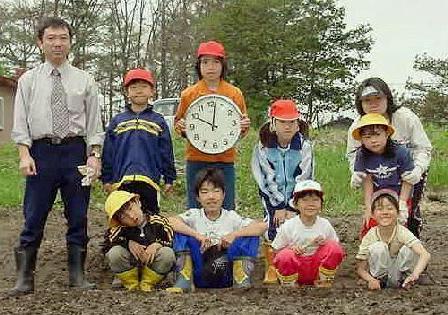
Fig. 7 North Japan |
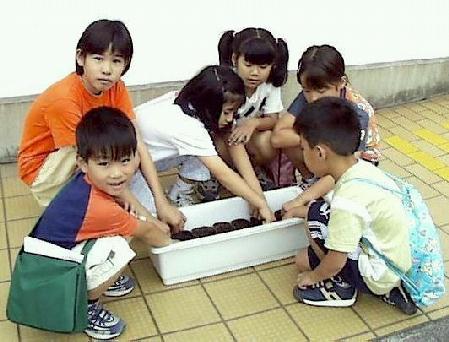
Fig. 8 Central Japan |
|
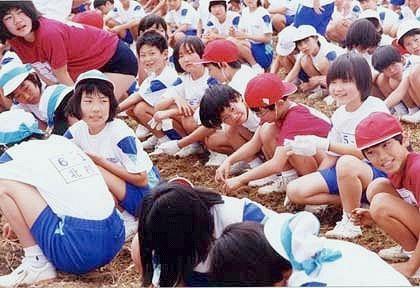
Fig. 9 South Japan |
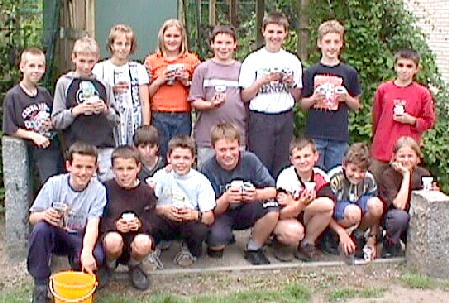
Fig. 10 In Belgium |
|
|
Like this, we count down and sowed Kenaf seeds together.
Poster WEB MEETING ROOM
The web meeting room gave us a chance to watch the progress of Kenaf
grown at other schools. It was interesting to see how climates in other
parts of Japan caused differences in the Kenaf’s growth.
|
|
|
| “ We had the first flower!.”, “ Our Kenaf doesn’t
have any bud yet”, “ How tall is your Kenaf?”, “How many leaves do you
have?”, “ What is the expected time for flowering?” We reported our impressions
and questions to each other on the WEB meeting room. Then, we worked to
make the answers. They came from our real activities. |
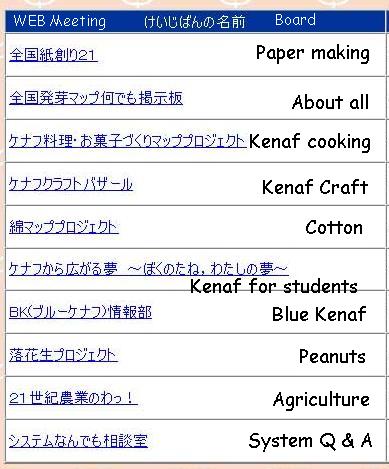
Fig.15 WEB Meeting Room |
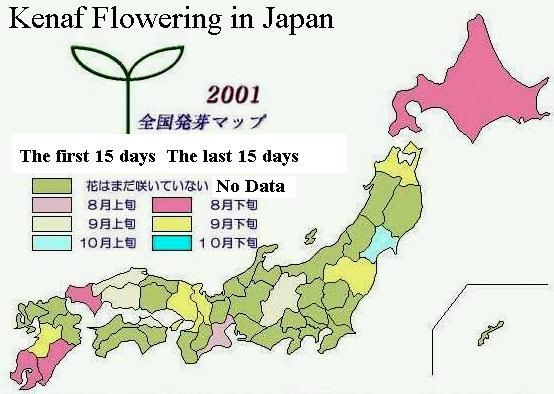
Fig. 16 Kenaf Flowering Map |
|
|
We have common topics, and exchange information through the Internet.
Even though we have common topics, the educational goals are determined
by each individual school teacher involved in the project. This permits
a very wide range of activities. Here are some examples
Poster KENAF COOKING
Kenaf not only absorbs lots of carbon dioxide but also is good to eat.
Kenaf handmade noodles, dumplings, and powder cakes are delicious.
|
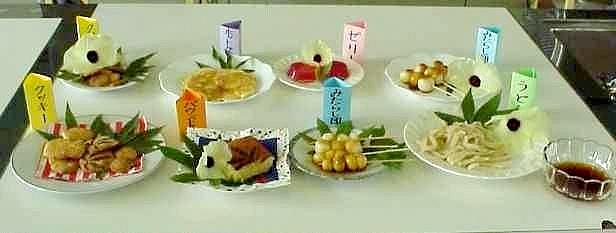
Fig. 17 Kenaf cooking menu |
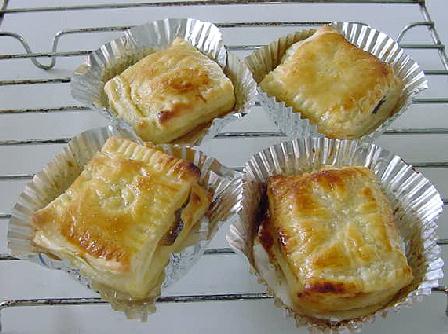
Fig. 18 Kenaf apple pie |
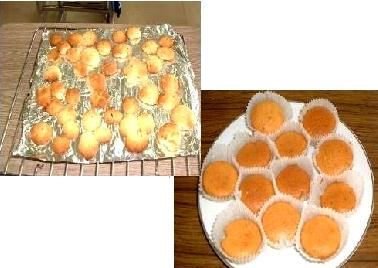
Fig. 19 Kenaf cakes |
|
|
Poster KENAF CRAFT
For Kenaf to be the best earth-aid no part of it should be
burned. We have to use all parts, flowers, leaves, stems, and roots.
|
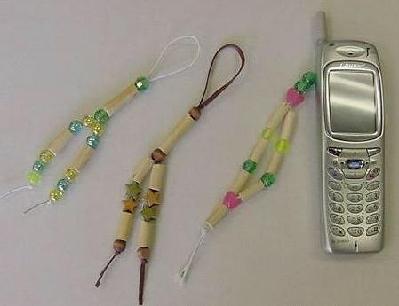
Fig. 20 Strap |
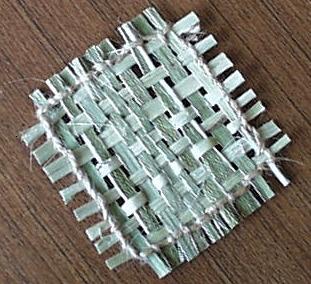
Fig. 21 Kenaf coaster |
|
|
3. Why is this project’s popularity increasing so rapidly?
. There are a number of reasons.
1. Many more Japanese schools have Internet access than had it 3 years
ago.
2. Teachers are learning how to use the Internet with their students.
Teachers chose this project. Because;
3. Observing and growing Kenaf ties in nicely with their science lessons.
|
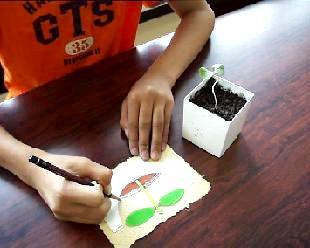
Fig. 22 Design |
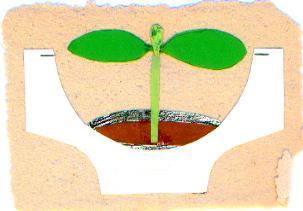
Fig. 23 Kenaf clock idea |
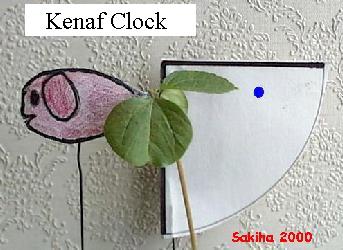
Fig. 24 Kenaf clock |
|
|
4. Learning about Kenaf gives an opportunity to explore environment
problems.
5. Linking Kenaf to social studies, science, and Japanese is simple
because it is already in school text books.
6 Tying Kenaf activities to the educational curriculum is so easily
done that teachers are eager to try them.
7 Although there were some difficult problems that occurred in the Kenaf
project, the children still enjoyed the friendly Internet communications
with other kids.
8. All of the following have a chance to work together:
Children - Children, Teachers - Children, Children -Teachers, Teacher
- Teachers. All - Specialist
Poster Cooperation in Japan
We edited a picture book, “Kenaf Is Insects’ Hotel”. Discussions
about the pictures we used were fun
|
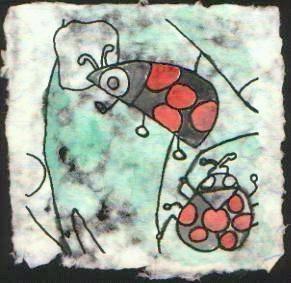
Fig. 25 Picture book editing |
|
Poster NON-WOOD Paper
We made paper from Klenaf without using trees. Though handmade
paper is not yet very strong, we are able to save forest resources.
|
|
|
| 9. Kenaf is an educational material well suited for
integrated learning. It also introduced us to a number of profession |
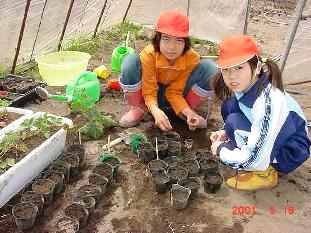
Fig. 29 We grew Kenaf like farmers |
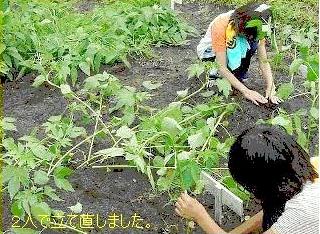
Fig. 30 |
|
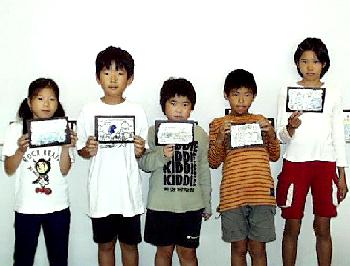
Fig. 31. We made paper from it like engineers |
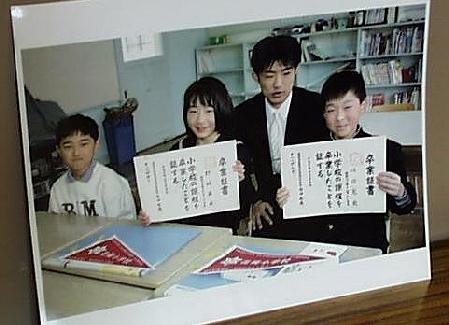
Fig. 32 |
|
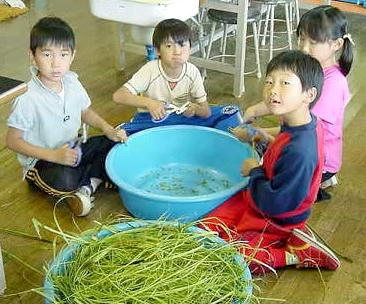
Fig. 33 |
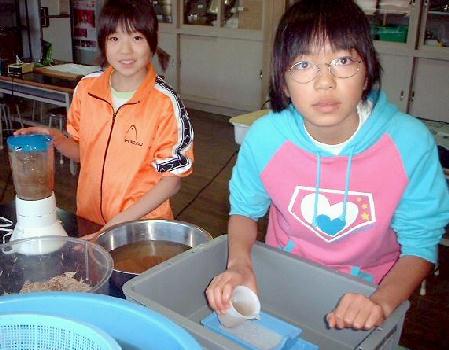
Fig. 34 |
|
|
We sent hand made postcards to my friends like postal workers. It was
most educational.
( Left ) In a small schools they made diploma paper from Kenaf. (Right)
6. Growing Kenaf with the children of other countries promotes international
understanding
Poster INTERNATIONAL COOPERATION
.We grew Kenaf and tried paper making with our friends in Belgium. Even
though we could not yet write in English, we were still able to help
each other on this project.
|
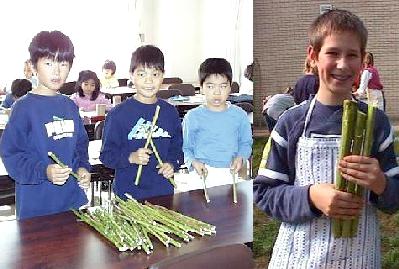
Fig. 35 Let’ work together ! |
|
Japan You mixed Kenaf and bread wrapping paper and we did Kenaf
and milk pack paper to make paper. We recycled paper both. They are
not same but we made fine paper with you.
Belgium It was not funny when we had made paper, that our hands
had such awful small and it took always very long.
Japan I made 10 post cards from Kenaf for editing my picture
book. It was very hard work.
Belgium My mama complained always that it took too much of our
time
|
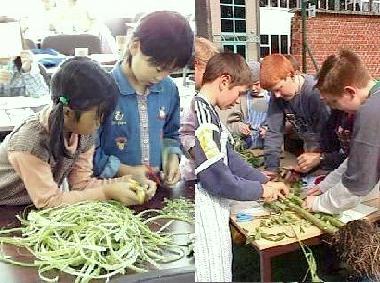
Fig. 36 It was very hard work. |
|
Belgium It was very nice that you sent us message. We are learning
a lot of English this way.
Japan We can not learn English until we are over 13 years old
but I want to do it as soon as possible and I want to send you my post
cards a lot..
Belgium Cutting the kenaf hurted our fingers but receiving and
sending message was fun too.
Japan We can not understand Dutch and English yet but we enjoyed
your pictures very much.
Belgium Making the little cards from Kenaf was fun and adding
the sugar beans was very nice.
|
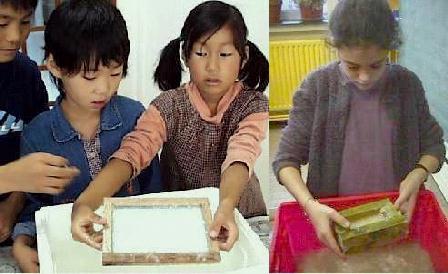
Fig. 37 Working together is wonderful |
|
Japan Thank you for your sugar beans and pretty cards. We liked
them very much.
Belgium It is very nice that we can show at home that we can
make paper.
Belgium It was good that everybody could make the paper.
Japan We were very happy we could make greeting cards from Kenaf
for you.
Belgium We had a beautiful result!
Japan We were very glad we made paper without chemical with you.
|
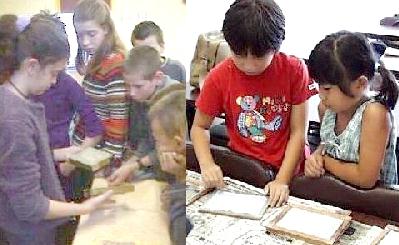
Fig. 38 Making seasons greeting cards |
|
A message from a Japanese children
“Our school is in the center of the city and we do not have any gardens.
We planted 3 Kenafs in the box in my school. Our Kenaf had a nice first
flower. We do not think our 3 Kenafs can save the earth, but if we can
feel the beauty of this creamy flower in our heart, we can keep our
earth clean. Will you grow Kenaf with us next year? We wish you set
up a big Kenaf bridge between Japanese and your countries children.
4. Future subjects
We have grown kenaf as the primary plant in this project for 5 years.
However this year we have started to grow 2 secondary plants. They are
cotton and peanuts. Growing American cotton is very difficult in Japan.
Now, with help from the Atlanta History Center, my staff and I are learning
1. The history of cotton 2. How it is grown 3. How it is processed to
make clothes
Poster FROM KENAF TO COTTON
In our web meeting room we share cotton growing with 30 schools. We
are very happy to be able to learn about cotton growing from the Atlanta
History Center where the AKS meeting is held. Here is a message from
Atlanta to Japan.
“Working with Japanese school children in Japan is a first for the
Atlanta History Center. We are honored at being given a chance to help
on this project. Nothing is more important than passing on knowledge
to the next generation and, at last, with the advent of the Internet,
it is possible to do that over great distances. There is no better way
to bring the world together.”
|
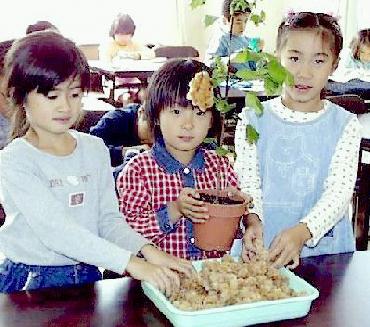
Fig.39 We had good harvest ”Thank you!” |
|
Because Japanese students don’t start studying English until they are
over 13 years old, the young children I work with are learning to communicate
well using pictures.
Through growing plants we can practice working together with people
from all nations. Perhaps the good international understanding that
results will led to a better chance for world peace. Next year we would
like to get to know you by sharing the growing of Kenaf and other plants.
Through this joint activity the children of Japan and the children of
your countries can build a Kenaf bridge leading to knowledge and friendship.
I came to Atlanta to sow a seed in American Kenaf society garden. Thank
you
Poster Post
I put a small post on our poster. Thank you for your posting comments
to Japanese children. I translated some of them from English to Japanese
and post them on our WEB meeting room.Japanese children were very glad
to read them. I will do other comments soon.
|

Fig. 41 Thank you for your nice message to Japanese children |
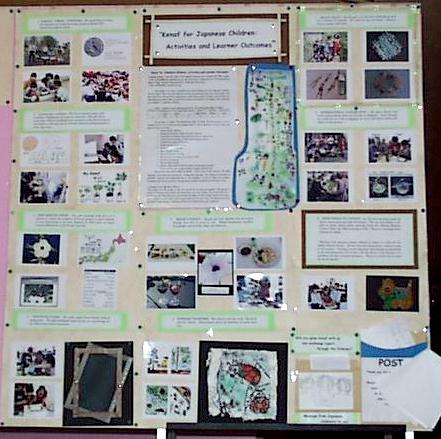
Fig 40 Our Poster |
|
Reference
Picture use permission,
Fig.2,3,4,8,12,13,16,22,23,24,25,26,27,28,33,40 from The Earth Club,
Shizuoka, Japan
Fig.18. 19, 20,21 from N.Kawahata, Hiroshima, Japan
Fig.7,29,30,31,32,33.34 from K.Miyawaki, Hokkaido, Japan
Fig.17 from Hirota Elementary school, Hyogo, Japan
Fig.1,15,16 The Germination map of Japan, Miyazaki, Japan
Fig.9,11 from S.Nakanishi, Miyazaki, Japan
Fig.36,37,38,39 from de Kriebel, Olen, Belgium and The Earth Club,
Shizuoka, Japan
Data use permission
Table1, 2, 3 from The Germination Map of Japan
Fig.41Posted message to Japanese children from A. Liu
Poster “From Kenaf to cotton, ” message from S.Vrooman from The Atlanta
History Center
|
  |














